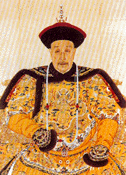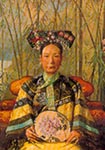|
History
 Construction of the Summer Palace began in 1750 under the direction of Qing Emperor Qianlong, in commemoration of his mother's 60th birthday, and took 15 years to complete. The palace, then named QingYiYuan (Garden of Pure Ripple,) served as a major royal garden, recreational retreat, and a cooler place to hold court during the hot summer months in Beijing. Qianlong, highly regarded in Chinese history, was personally involved in the design and construction of the Summer Palace. A monument to his political achievements, the Summer Palace is a living example of the finest cultural and architectural accomplishments of the Qing Dynasty.
Construction of the Summer Palace began in 1750 under the direction of Qing Emperor Qianlong, in commemoration of his mother's 60th birthday, and took 15 years to complete. The palace, then named QingYiYuan (Garden of Pure Ripple,) served as a major royal garden, recreational retreat, and a cooler place to hold court during the hot summer months in Beijing. Qianlong, highly regarded in Chinese history, was personally involved in the design and construction of the Summer Palace. A monument to his political achievements, the Summer Palace is a living example of the finest cultural and architectural accomplishments of the Qing Dynasty. The entire palace, except for the stone foundations and a handful of buildings, was burned to the ground in 1860 by English and French allied troops when they invaded Beijing during the Second Opium War.
 Empress Dowager Cixi, as historically unpopular as Qianlong was popular, restored much of the Summer Palace between 1866 and 1895, financing the work with 300 millions tales of silver that had been set aside for the construction of a modern navy. Cixi renamed the palace YiHeYuan (Garden of Good Health and Harmony) the name by which it is still known today.
Empress Dowager Cixi, as historically unpopular as Qianlong was popular, restored much of the Summer Palace between 1866 and 1895, financing the work with 300 millions tales of silver that had been set aside for the construction of a modern navy. Cixi renamed the palace YiHeYuan (Garden of Good Health and Harmony) the name by which it is still known today.
The palace was burned again by the English in 1900 in response to the Boxer Rebellion. After the fall of the Qing Dynasty in the Nationalist Revolution of 1911, the dilapidated grounds of the Summer Palace served as a private residence of China's last Emperor Bu Yi, until he was expelled from the Forbidden City in 1924. Since then, the gardens have been open to the public.
After the Communists came to power in 1949, the Chinese government invested in restoring the Summer Palace to its Imperial glory. In 1960, the Summer Palace became one of the first cultural sites to receive formal protection under order of the State Council. In the winter of 1990, thousands of Beijing citizens came to the summer palace to clean up Kunming Lake, and numerous other restoration projects began in earnest. The best extant example of Chinese imperial gardens and landscape architecture, the Summer Palace was selected by UNESCO as a World Heritage Site in 1998.
Next: Orientation
|



